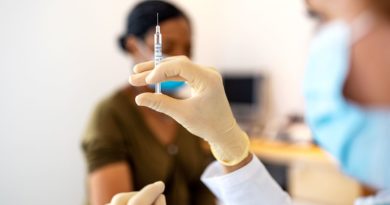The Lab-Leak Theory: Inside the Fight to Uncover COVID-19’s Origins

Shi was a fixture at international virology conferences, thanks to her “state-of-the-art” work, said James LeDuc, the longtime director of the BSL-4 Galveston National Laboratory in Texas. At the international meetings he organized, Shi was a regular, along with Ralph Baric from UNC. “She’s a charming person, completely fluent in English and French,” said LeDuc. Sounding almost wistful, he added, “This is how science works. You get everyone together, they share their data, go out and have a beer.”
Shi’s journey to the top of the virology field had begun with treks to remote bat caves in southernmost China. In 2006, she trained at the BSL-4 Jean Merieux-Inserm Laboratory in Lyon, France. She was named director of the WIV’s Center for Emerging Infectious Diseases in 2011, and its BSL-3 lab director in 2013.
It’s hard to think of anyone, anywhere, who was better prepared to meet the challenge of COVID-19. On December 30, 2019, at around 7 p.m., Shi received a call from her boss, the director of the Wuhan Institute of Virology, according to an account she gave to Scientific American. He wanted her to investigate several cases of patients hospitalized with a mysterious pneumonia: “Drop whatever you are doing and deal with it now.”
The next day, by analyzing seven patient samples, her team became one of the first to sequence and identify the ailment as a novel SARS-related coronavirus. By January 21, she had been appointed to lead the Hubei Province COVID-19 Emergency Scientific Research Expert Group. At a terrifying moment, in a country that exalted its scientists, she had reached a pinnacle.
But her ascent came at a cost. There is reason to believe she was hardly free to speak her mind or follow a scientific path that didn’t conform to China’s party line. Though Shi had planned to share isolated samples of the virus with her friend James LeDuc in Galveston, Beijing officials blocked her. And by mid-January, a team of military scientists led by China’s top virologist and biochemical expert, Major General Chen Wei, had set up operations inside the WIV.
Under scrutiny from governments including her own, with bizarre conspiracy theories and legitimate doubts swirling around her, she began lashing out at critics. “The 2019 novel coronavirus is a punishment from nature for humanity’s uncivilized habits,” she wrote in a February 2 post on WeChat, a popular social media app in China. “I, Shi Zhengli, guarantee on my life that it has nothing to do with our lab. May I offer some advice to those people who believe and spread bad media rumors: shut your dirty mouths.”
Though Shi has portrayed the WIV as a transparent hub of international research beset by false allegations, the State Department’s January fact sheet painted a different picture: of a facility conducting classified military research, and hiding it, which Shi adamantly denies. But a former national security official who reviewed U.S. classified materials told Vanity Fair that inside the WIV, military and civilian researchers are “doing animal research in the same fricking space.”
While that, in and of itself, does not prove a lab leak, Shi’s alleged lies about it are “absolutely material,” said a former State Department official. “It speaks to the honesty and credibility of the WIV that they kept this secret…. You have a web of lies, coercion, and disinformation that is killing people.”
Vanity Fair sent Shi Zhengli and the director of the Wuhan Institute of Virology detailed questions. Neither responded to multiple requests for comment by email and phone.
As officials at the NSC tracked collaborations between the WIV and military scientists—which stretch back 20 years, with 51 coauthored papers—they also took note of a book flagged by a college student in Hong Kong. Written by a team of 18 authors and editors, 11 of whom worked at China’s Air Force Medical University, the book, Unnatural Origin of SARS and New Species of Man-Made Viruses as Genetic Bioweapons, explores issues surrounding the development of bioweapons capabilities.
*** This article has been archived for your research. The original version from Vanity Fair can be found here ***


